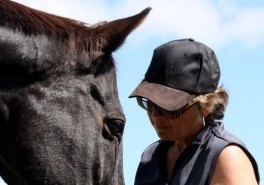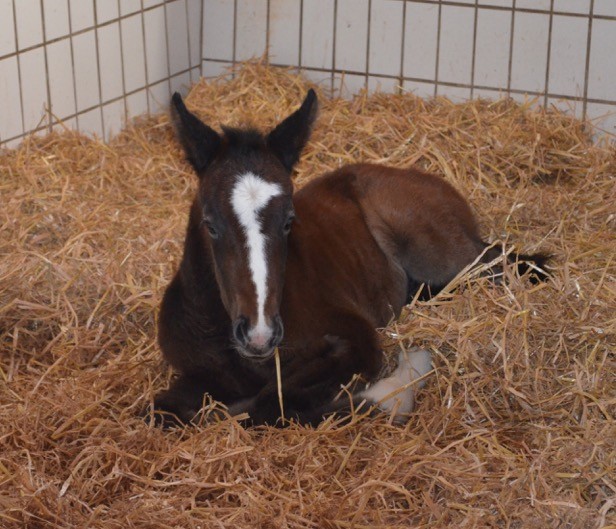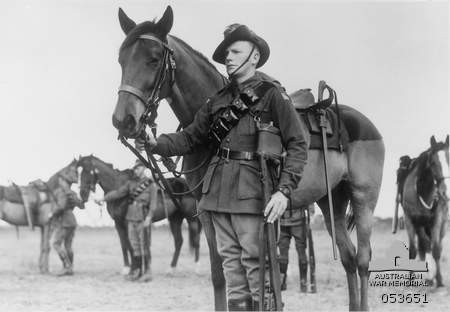Q & A time from a reader
 Q. I have a Friesian that I just can’t seem to keep his coat black, can you tell me what the best feed/supplement it to darken a coat?
Q. I have a Friesian that I just can’t seem to keep his coat black, can you tell me what the best feed/supplement it to darken a coat?
A. Every horse owner wants their horse looking their best and coat conditioning seems to be an ever present topic amongst horsemen. What we need to remember is the health of the skin and coat is reflective of the health of the horse and can reveal a lot about the horse’s diet. First and foremost, a balanced diet that meets all the nutrient requirements of the horse is the main contributing factor to a high quality coat. The use of rugs and elbow grease will be of little help if correct nutrition is lacking. Understanding how different nutrients contribute to skin and coat health, and how these work together to enhance the coat as part of a balanced diet, is more important than singling out individual nutrients and expecting them to work wonders.
Nowadays, most performance horses are provided with a diet consisting of forage (pasture, hay, chaff) supplemented with a concentrate feed to meet elevated energy requirements for work. Most manufactured feeds will meet a horse’s nutritional requirements if fed at the recommended rate. However, many horse owners feed below the recommended intake and, while the horse’s energy levels may still be met, their ration is likely to fall short of the optimal nutrient requirements for a healthy, shiny coat. A traditional diet of oats and chaff will also likely be deficient in some essential amino acids, fats, vitamins and minerals important for coat health. In these situations, nutrient requirements can be successfully met through the addition of a balanced vitamin and mineral supplement and high quality protein source, topping up amino acids and essential nutrients to an optimal level.
There are several key nutrients to achieve that glossy coat, including amino acids (particularly lysine and methionine), fatty acids, trace minerals (zinc and iodine) and the B vitamin biotin. Feeding a combination of biotin, zinc and methionine supports the growth of high quality hair and aids in growing out of winter coats, while lecithin (a source of fatty acids) plays a role in promoting healthy skin and a healthy shiny coat.
The easiest approach to ensuring your horse is provided with these key nutrients for skin and coat health is by adding a scientifically formulated coat supplement, such as KER Bio-Bloom, to the ration.
In regards to your Friesian, a faded coat may indicate a mineral deficiency. A darker or deeper coat colour may be achieved by feeding KER Hemabuild, a vitamin B and trace mineral supplement containing a blend of organic copper, zinc, iodine, manganese and iron, which are thought to aid in coat colour enhancement. It should be noted that KER Hemabuild is not recommended to be fed to palominos or buckskin horses as it may cause smutting in the coat. Adding oil to your horse’s ration is another method to achieve a glossy coat. Plant or vegetable oils are commonly added as a top-dressing and contain unsaturated essential fatty acids that horses are unable to synthesise within their bodies. However, corn and other vegetable oils are now known to have an unbalanced omega 3 to omega 6 ratio, which fails to provide the full benefits of the long chain omega 3 fatty acids, DHA and EPA. On the other hand, fish oil is rich in omega 3 fatty acids and provides a direct source of DHA and EPA to help improve skin and coat condition. KERx EO·3 provides a concentrated source of DHA and EPA, which has been deodorised and flavoured, making it highly palatable to horses.
Remember you should always discuss dietary changes with an equine nutritionist and/or your veterinarian if your horse has specific nutritional concerns. For further information or help with formulating your horse’s ration contact KER’s FREE nutrition consultation service on 1800 772 198 or email advice@ker.com.
Recommended Products





